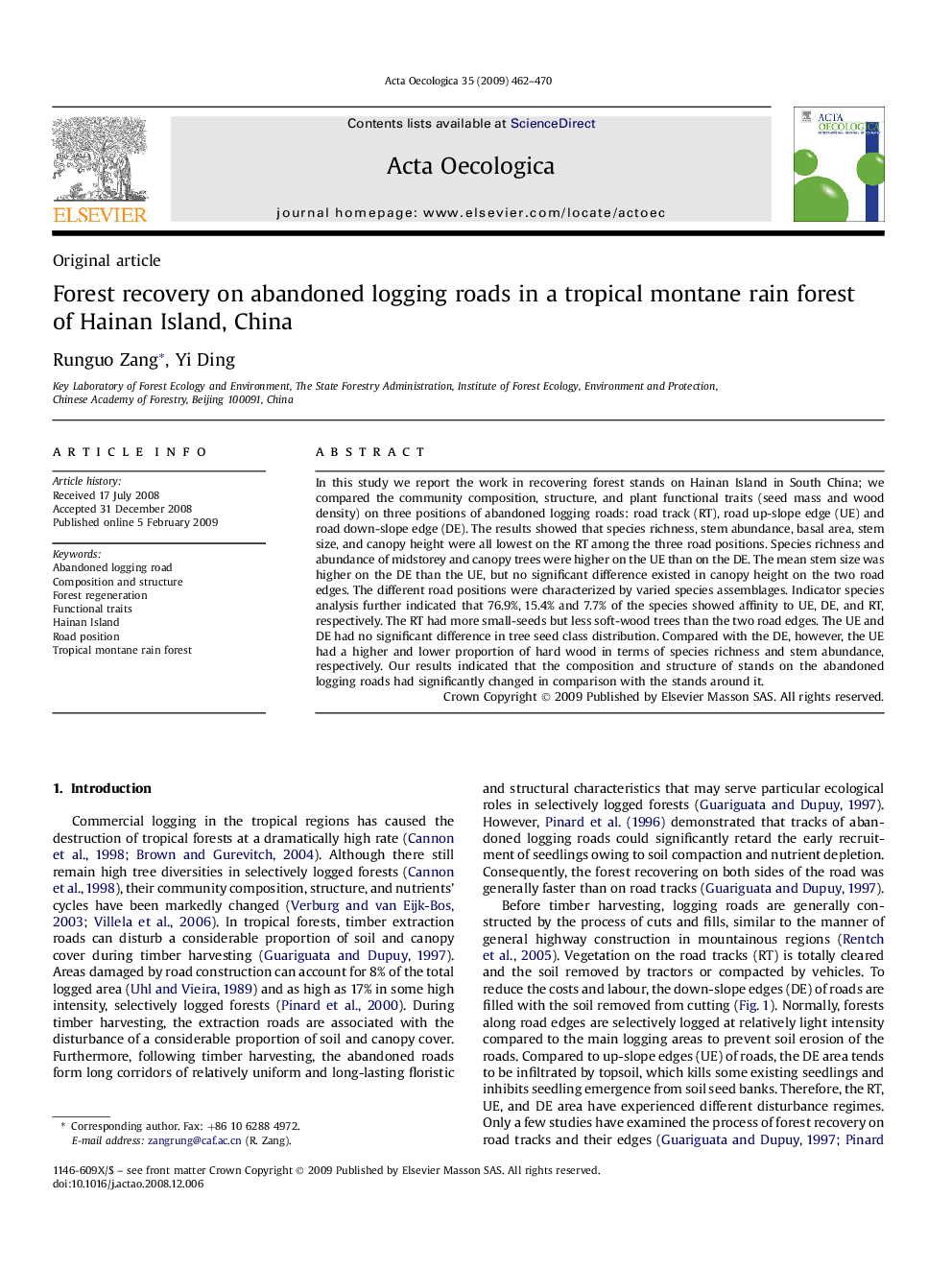| Article ID | Journal | Published Year | Pages | File Type |
|---|---|---|---|---|
| 4381014 | Acta Oecologica | 2009 | 9 Pages |
In this study we report the work in recovering forest stands on Hainan Island in South China; we compared the community composition, structure, and plant functional traits (seed mass and wood density) on three positions of abandoned logging roads: road track (RT), road up-slope edge (UE) and road down-slope edge (DE). The results showed that species richness, stem abundance, basal area, stem size, and canopy height were all lowest on the RT among the three road positions. Species richness and abundance of midstorey and canopy trees were higher on the UE than on the DE. The mean stem size was higher on the DE than the UE, but no significant difference existed in canopy height on the two road edges. The different road positions were characterized by varied species assemblages. Indicator species analysis further indicated that 76.9%, 15.4% and 7.7% of the species showed affinity to UE, DE, and RT, respectively. The RT had more small-seeds but less soft-wood trees than the two road edges. The UE and DE had no significant difference in tree seed class distribution. Compared with the DE, however, the UE had a higher and lower proportion of hard wood in terms of species richness and stem abundance, respectively. Our results indicated that the composition and structure of stands on the abandoned logging roads had significantly changed in comparison with the stands around it.
